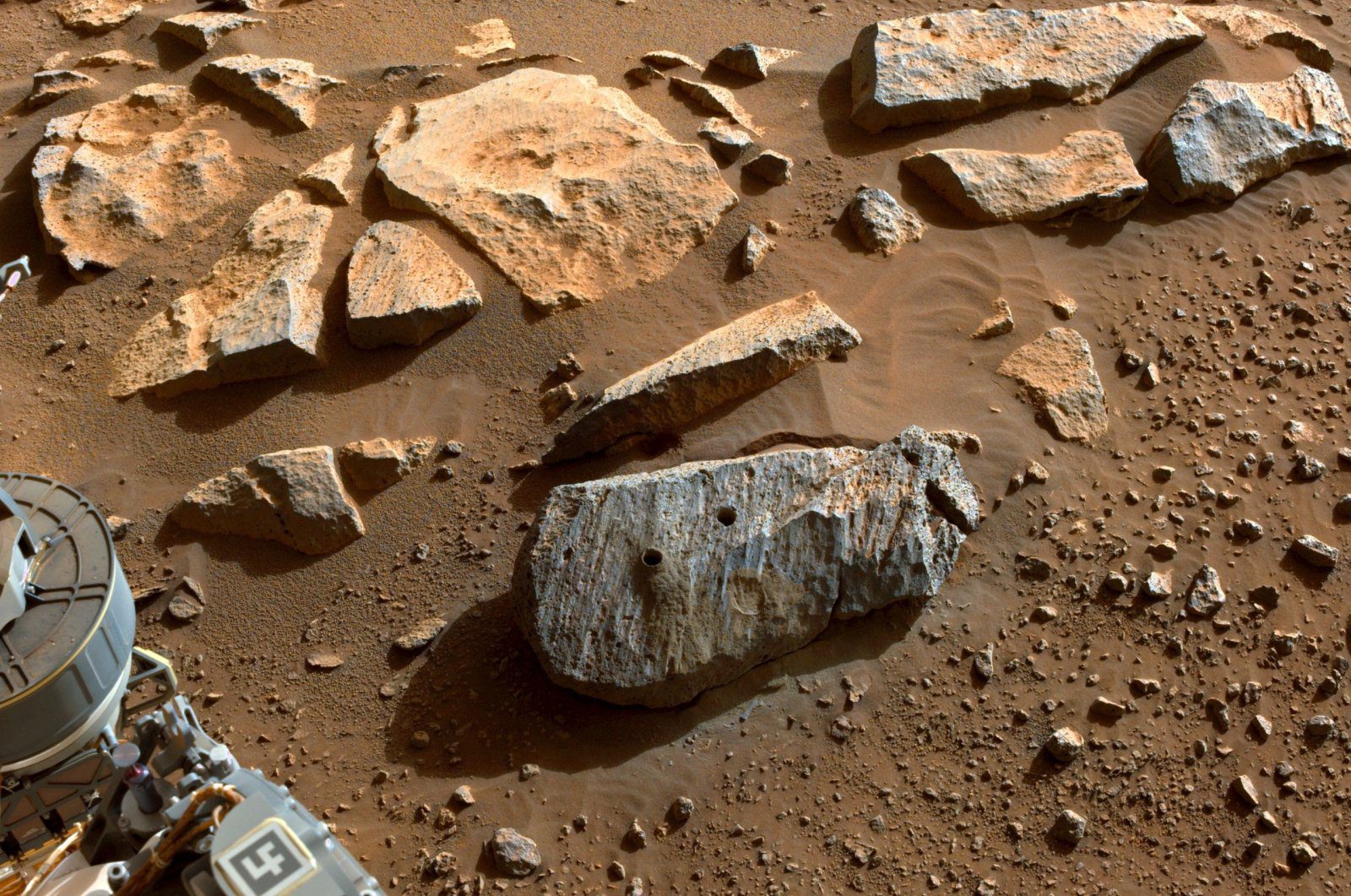The Perseverance rover has collected two rock samples on Mars. NASA said that the samples will give a detailed insight into the planet’s history. The space agency has named the first sample Montdenier. The second sample has been named Montagnac. The first sample was collected by Perseverance on September 6. The second sample was collected on September 8. Both samples were collected from the same rock. This was the second attempt by the rover to collect samples on Mars. The rover had in August made attempts to collect samples but it failed. According to NASA, the rocks from where samples were collected by the rover show signs that they were in contact with water for a long time.
NASA said that the first rocks boost the case for searching for ancient life on the planet. The samples hold the potential of being habitable. The agency said that the rock is basaltic in composition. The rock could be a product of lava flows on the surface. It provided the first core samples. The agency said that salts were also found in the rocks. Salts were likely formed when groundwater flowed on the surface and modified original minerals. It is more likely that salts were left after water, which was in the liquid form, evaporated. The Martian environment is extremely thin. Mars was believed to be once wet just like Earth. But the planet is mostly dry now. There are, however, ice deposits in the Polar Regions. Past studies suggested that water was plummeted by solar wind particles.
NASA said that salt minerals may have been trapped in the form of tiny water bubbles. If true, this could be the best fit to serve as microscopic time capsules. This will offer clues about Mars’ climate history and habitability. The agency said that groundwater that touched the rock could be related to a lake that existed in the Jezero crater. The groundwater traveled through the rocks for a long time before it dried up. Scientists couldn’t tell for how long water touched these rocks. But they feel that the timing was enough to welcome microscopic life. According to NASA, Perseverance will collect another sample from the site that is 200 meters away in South Seitah. Perseverance is NASA’s mission to explore the Red Planet and look for possible signs of microbial life. It will set the tone for planning a crewed mission to the planet.
